- Occasionally I rerun a favorite older post because few current readers have seen it. A different version of this one was originally published on August 25, 2011. For this version I’ve changed the title, rewritten much of the text and cleaned up the formatting. I haven’t reprocessed the images so they have my old copyright watermark and I think some of them are just a little dark.
American Avocets may have the most complex and reliably choreographed sexual behaviors of any bird species I photograph. When I’m watching them perform I can literally predict what their next move will be to an astonishing degree of accuracy. Much of it happens very quickly and is easy to miss when the observer is watching it live but photographs can freeze the action and tell the story well.
I’ll present several sequences of different birds that will illustrate most of the important stages of the behavior.
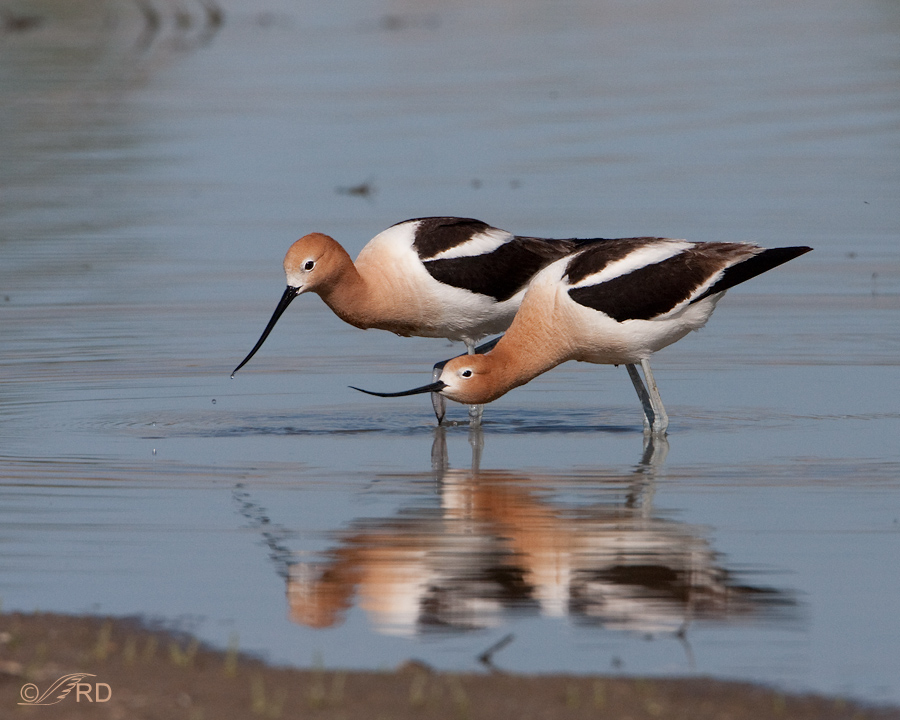
Avocets are monogamous and pairs form up in the spring when the female persistently associates with the male until she is eventually tolerated, then accepted as a mate. The female initiates copulation by the Solicitation Posture you see above. In that posture she holds her neck extended far out and low, so low at times that much of her head, bill and neck are under water as you’ll see in a later photo.
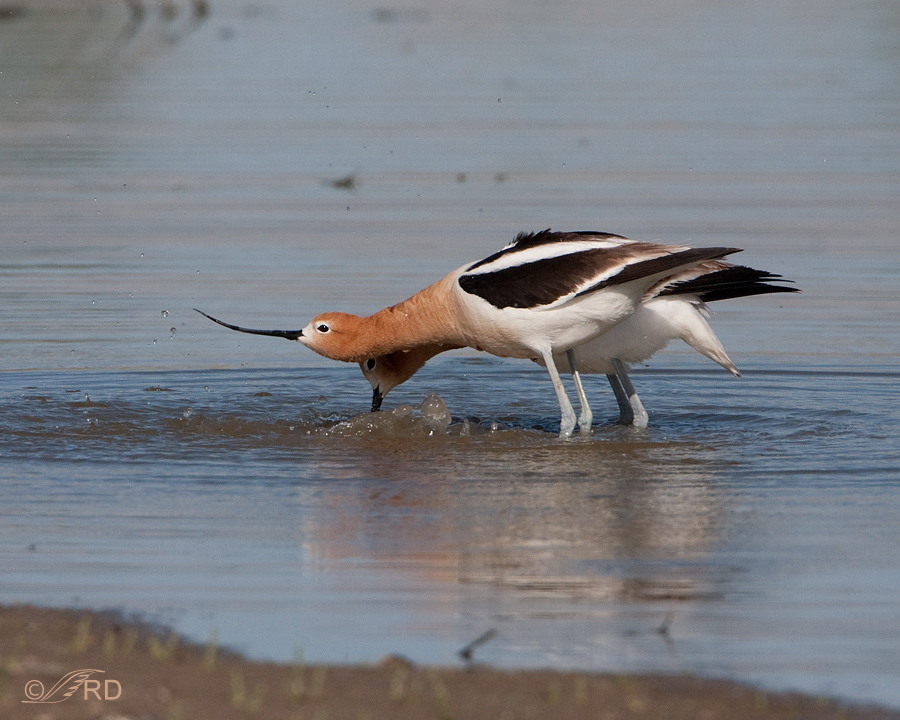
Once interested, the male performs Sexual Preening where he stands close to the female and extends his neck upward so that his bill tip can preen his breast, always on the side closest to her. His actual preening cannot be seen here but you’ll see it in a later image. Water is used in this specialized preening process which he gets by placing his bill in the water and vigorously stirring it around (as you see here) and then bringing the water in his bill to his breast. The water stirring becomes more intense just before copulation.
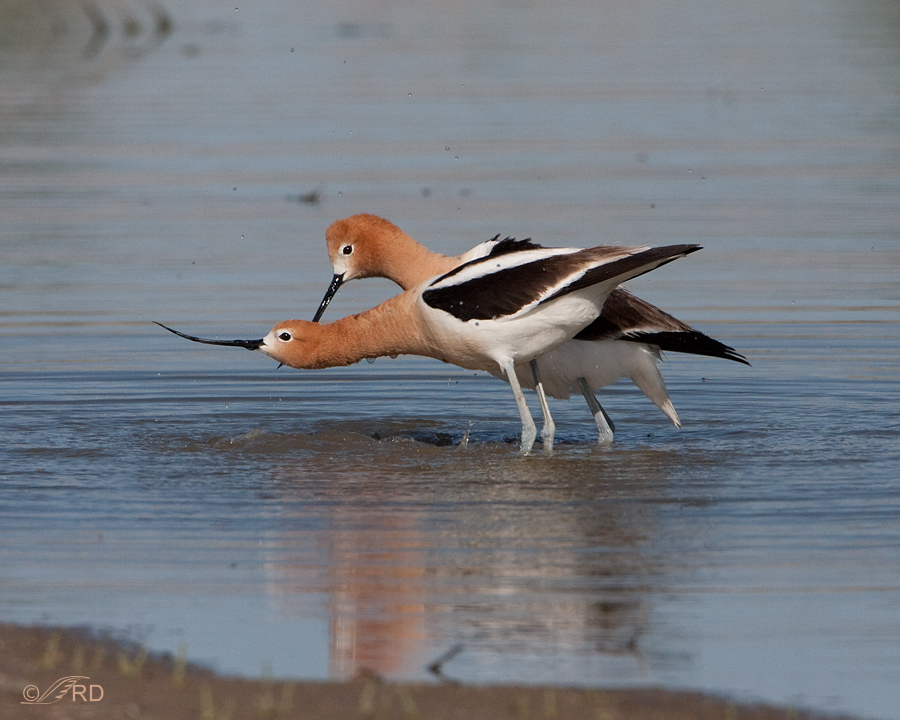
I find nothing in the literature about it but every time I’ve seen these birds mate, just as the male is about to mount her he places his bill on the side of her neck like this (you’ll get a better look in another image). I wonder if it’s just part of the ritual, perhaps to stimulate her, or maybe it’s a way to help him stabilize himself as he begins to mount her.
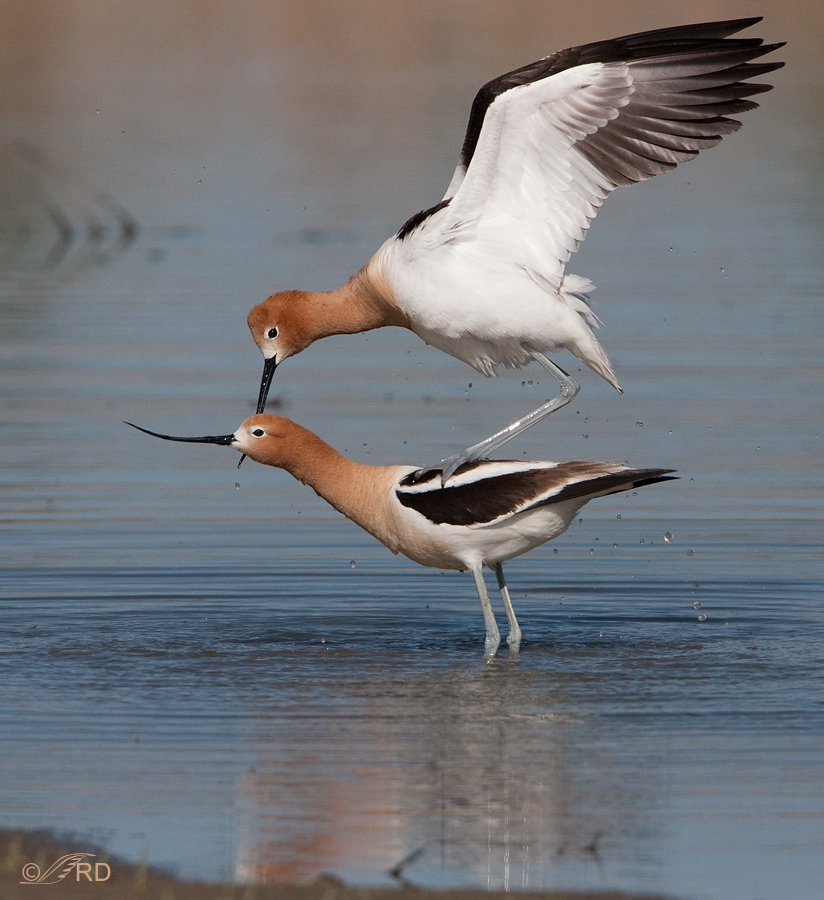
He continues to press his bill against the side of her face as he mounts her.
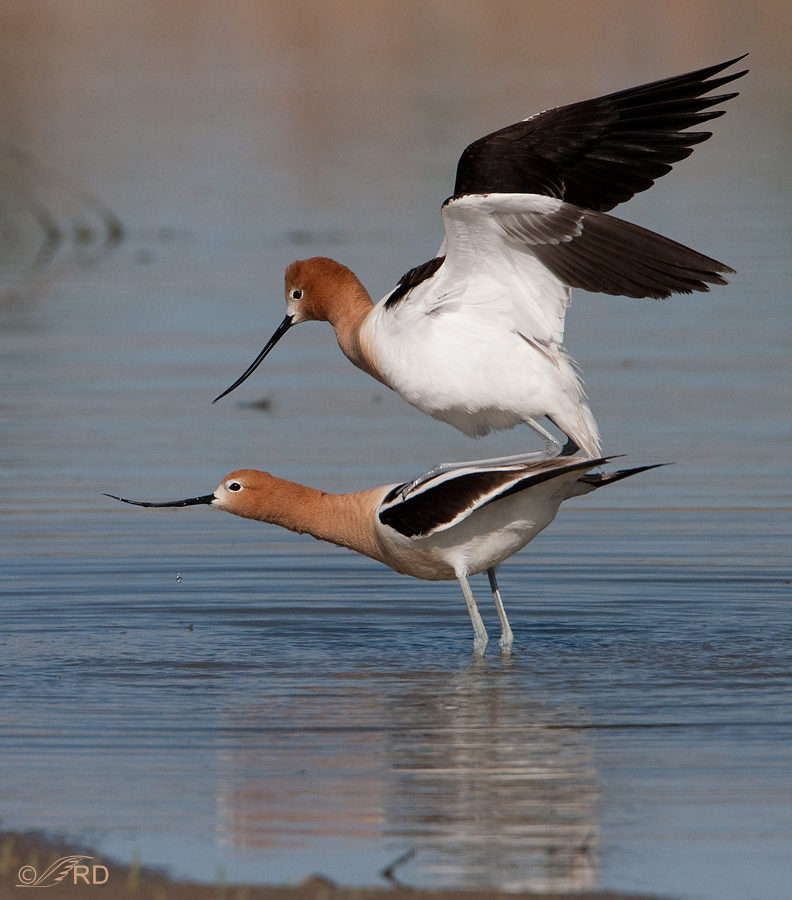
The back of the female must be an unstable staging platform for the male so he rests his tarsometatarsi on her back to help stabilize himself during the process. He flutters his wings to maintain balance. In this instance I missed the actual “cloacal kiss” because my buffer had filled up. Wouldn’t you know.
Perhaps the most endearing stage of this mating display is immediately after copulation when the birds always briefly cross bills like this and the male places his wing over the female in a way that seems loving and intimate to us. Here the left wing of the male is wrapped completely over her back but it’s difficult to make out. Another image below will show it more clearly.
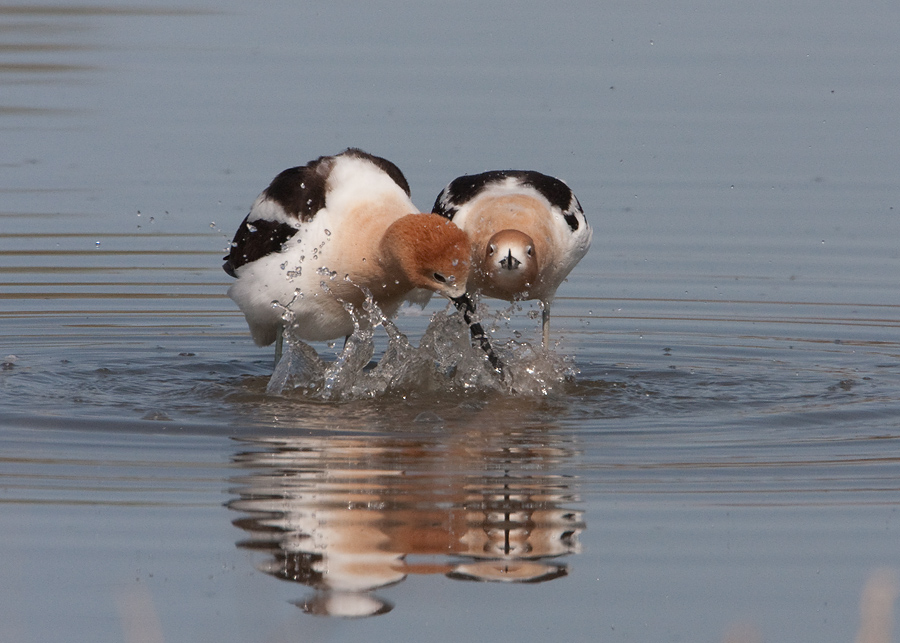
Here’s another sequence of different birds to show some of the stages from a different angle and hopefully more clearly. In this shot the male is splashing his bill in the water as a prelude to Sexual Preening and the female is in her Solicitation Posture.
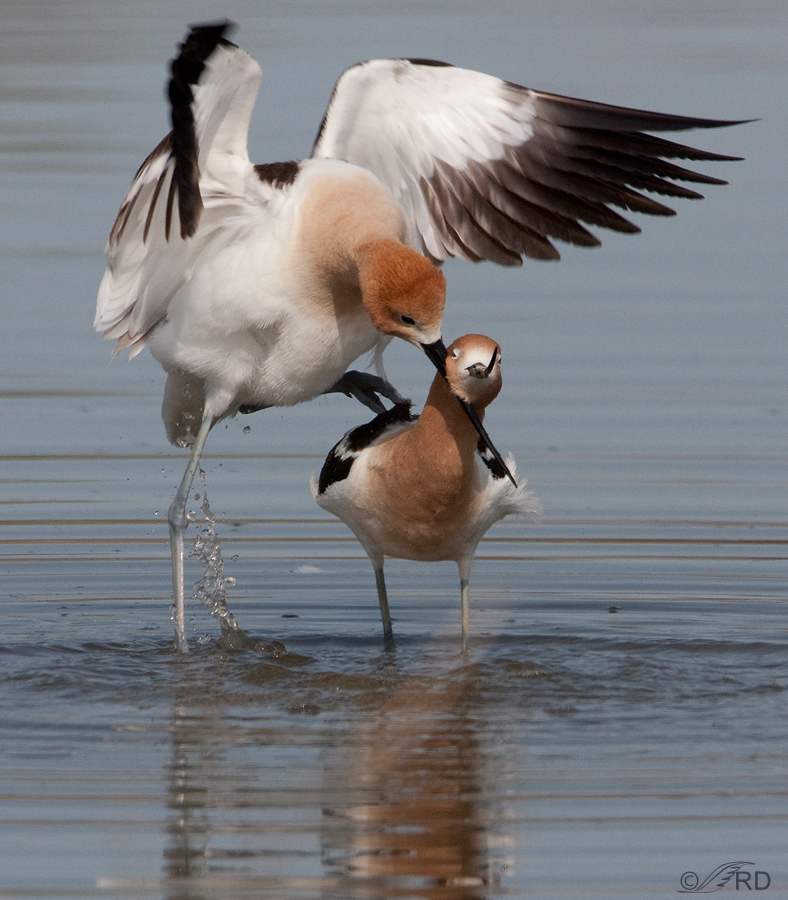
This is a better look at the way the male presses his bill against the side of her neck/face as he mounts her.
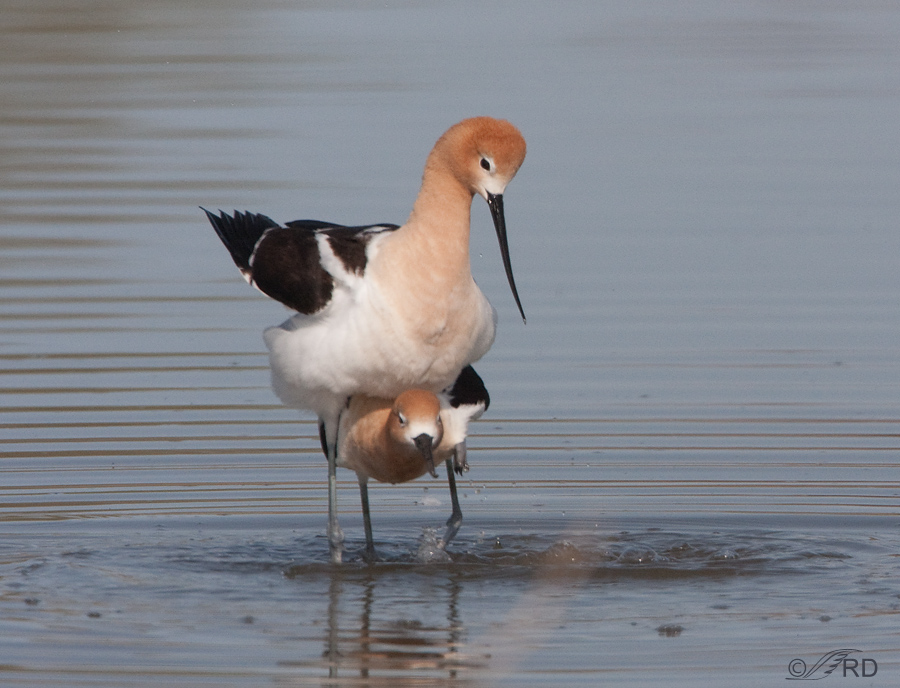
As I said before the females back is an unstable platform and in this case the male fell forward off of her. It made me laugh and feel sorry for them at the same time. Perhaps these birds were “first timers”.
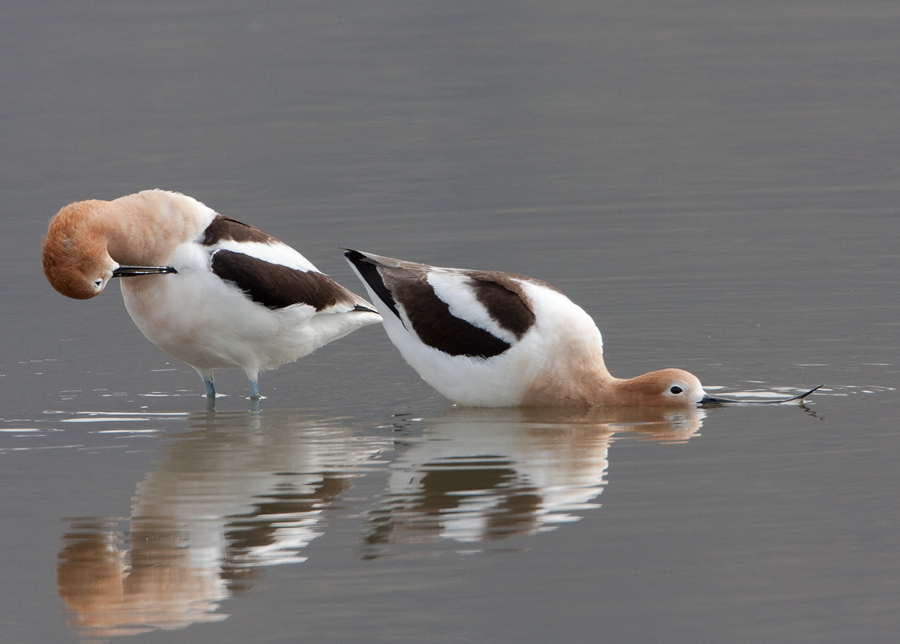
Another look at the Solicitation Posture of the female and the male doing the breast preening part of Sexual Preening that we didn’t see in the first sequence above. Notice that he always preens on the side closest to the female.
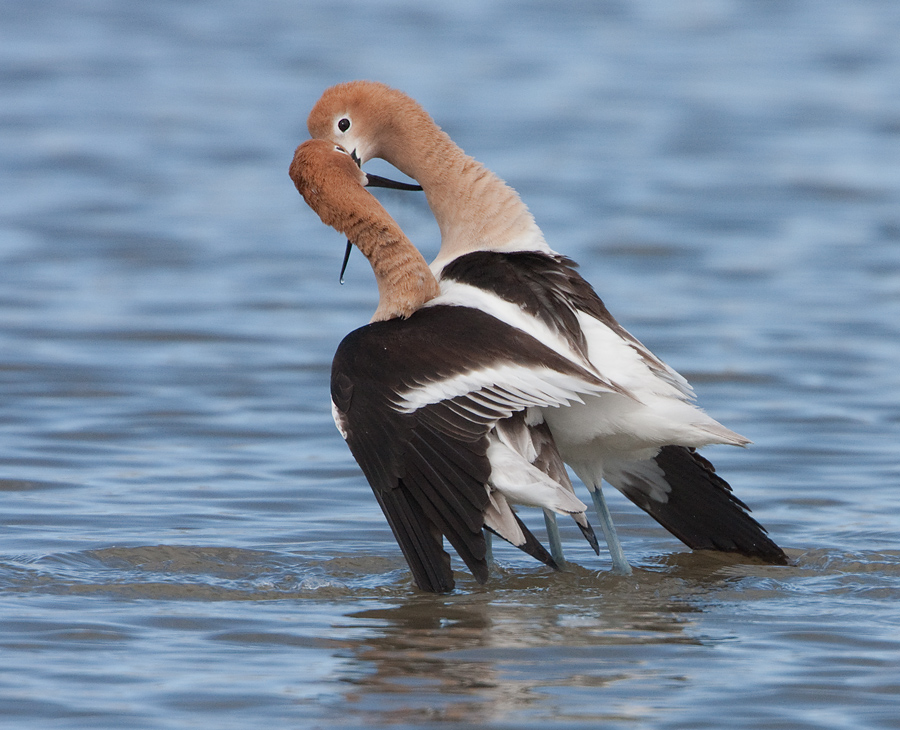
A different view of bill-crossing after copulation. Here the wing of the male being draped over the back of the female is more easily seen.
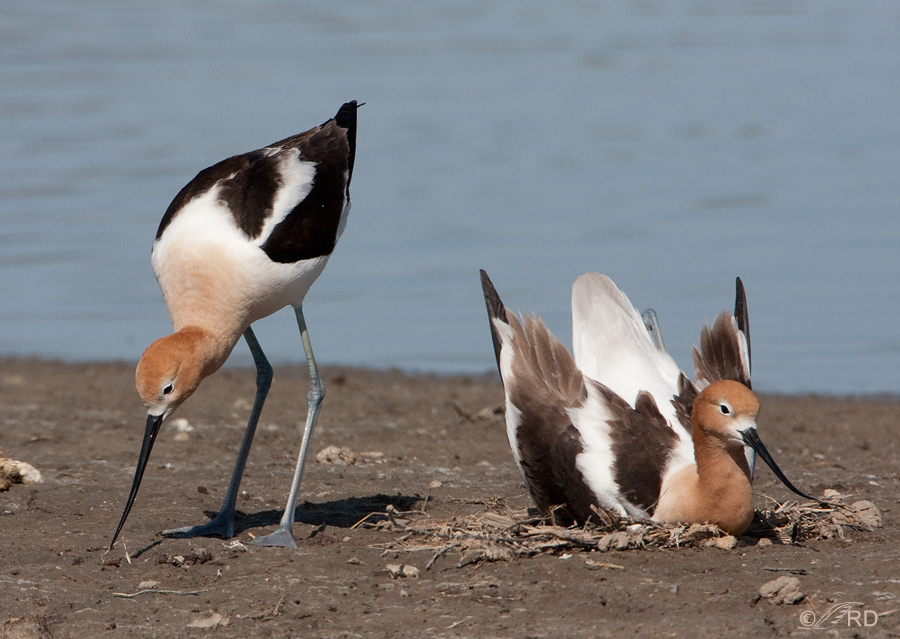
Though not part of the mating behavior I decided to include a few images that illustrate some of the natural consequences of mating. In this photo the mated birds are constructing their nest. The female is on the nest while the male is picking up potential nest-building material. Sometimes he would toss it away after picking it up and other times he would deliver it to her and she would arrange it on the nest.
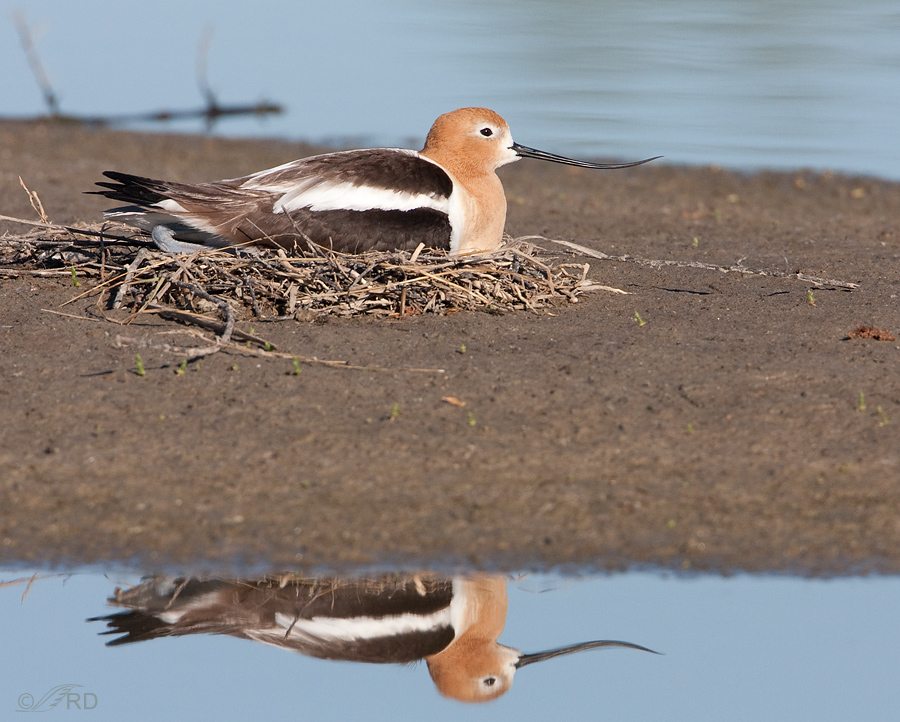
Incubating the eggs.
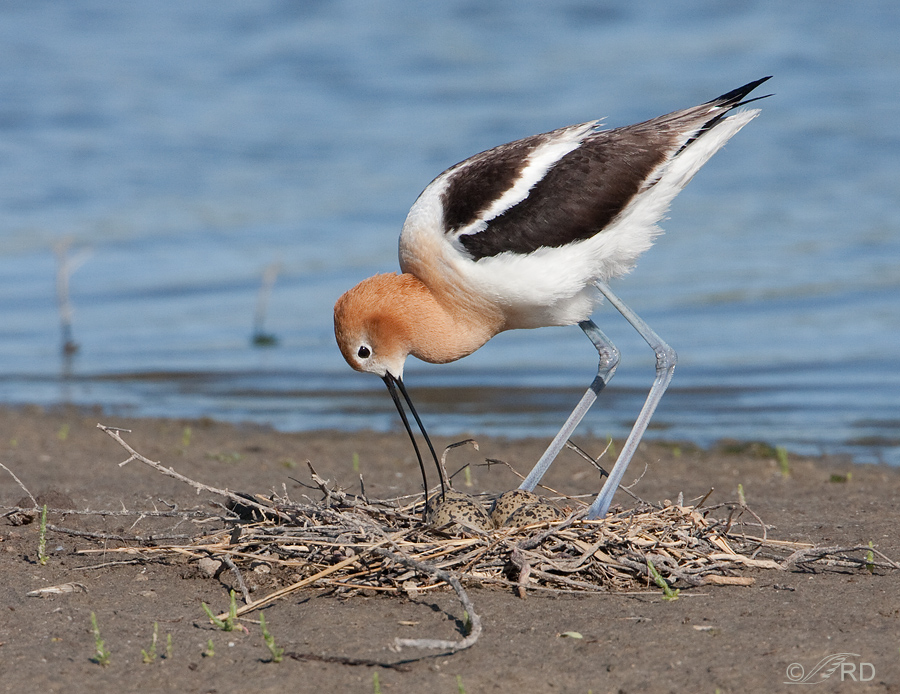
The eggs are being turned. Clutch size is 3-4 eggs, usually 4. Here there are 4 but one is a little difficult to see.
And here’s the end result of all of this – a cute little ball of fluff with huge legs and feet.
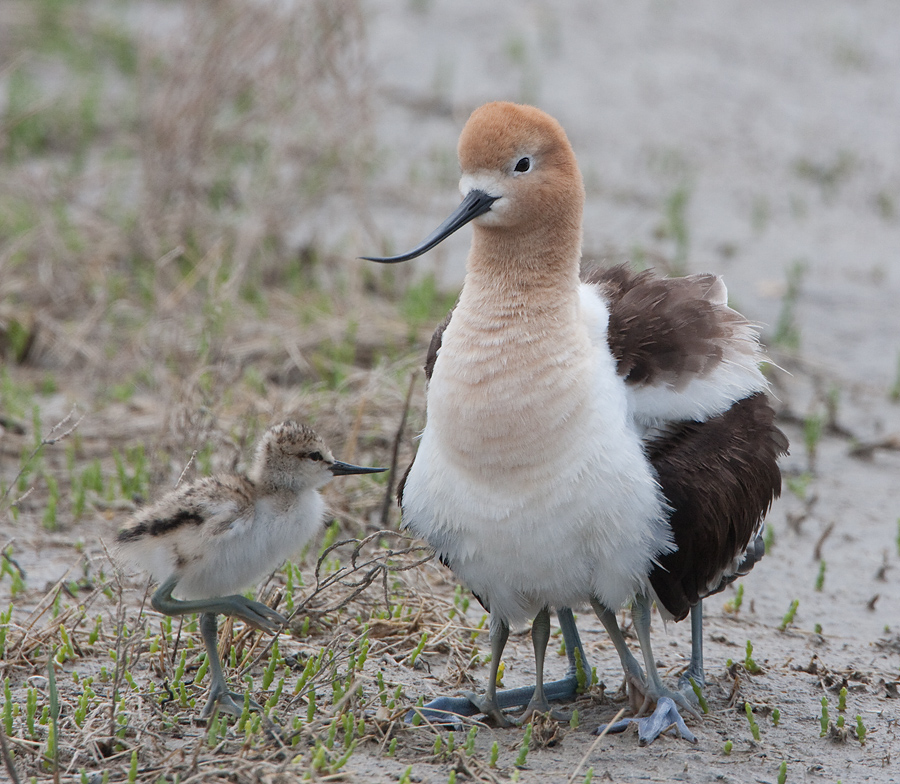
I didn’t have good light for this one but if you count legs you’ll see that there are four birds here.
I want to point out that I never approached or disturbed adults or chicks to get these images. I never got out of my pickup and was always on the main road through the refuge where the shots were taken. Never did I see any sign that these birds were uncomfortable with my presence.
Ron
Note: American Avocets are seasonally monogamous meaning a mated pair stays with each other during the breeding season but they don’t remain together for the rest of the year. But many of them will pair up again with their previous mate the following year. Cornell’s Birds of North America Online puts it this way – “Avocets exhibit substantial but incomplete preference for old mates when they are present.”


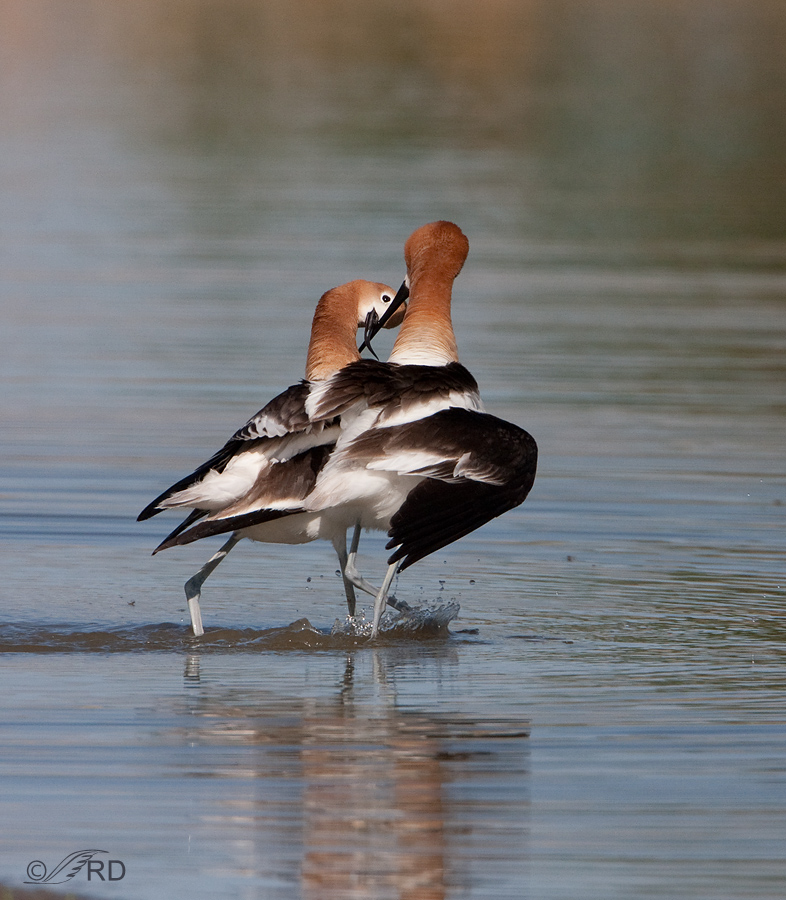
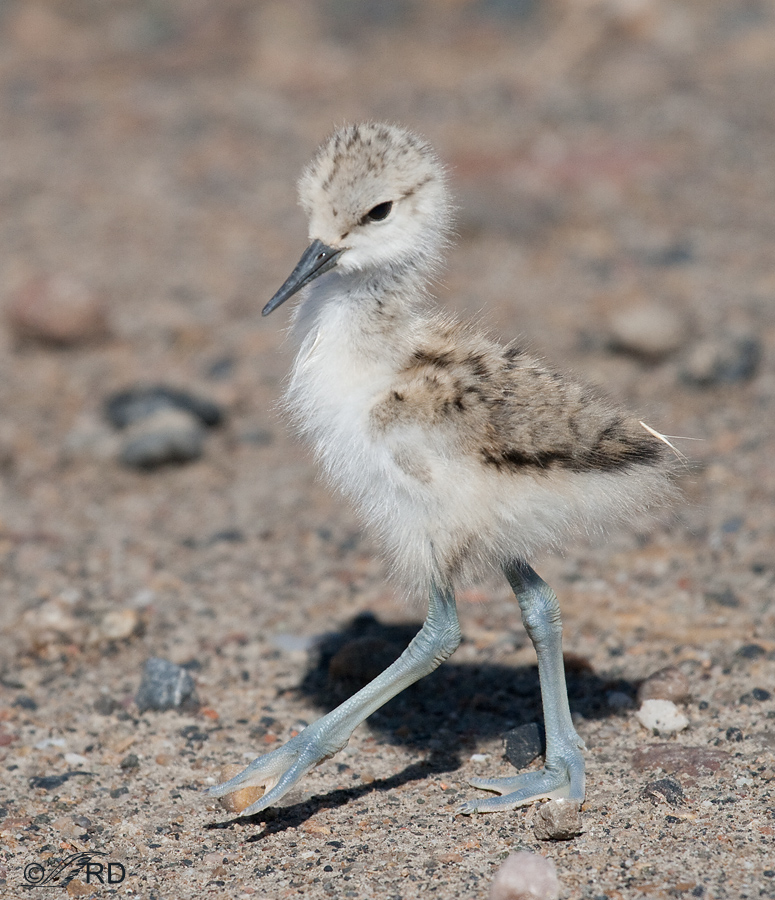
Awww. I’ve known a couple of men, who will remain unnamed, who could use some coaching about how comforting that wing over the back snuggle is. Thank you for the intimate experience- er, in the photographs I mean. Spring cheers to you!
Learned a lot and the photos are wonderful.
I love the ones with the clearest reflections in the water, the first and the one on the nest. These are a great series depicting the courtship and bringing up the family..
Thanks, Jane.
Ron,
Fascinating shots. Thanks for the “display.”
Stephen
Thank you, Stephen.
Thanks for replaying this great series Ron, its fantastic! Truly awesome images and storytelling, very inspiring. Its great to learn in such an entertaining and fun way. Masterful.
Thanks, Dave. When learning is interesting and fun we do it better.
Fascinating — and super sweet! The babies are adorable. Thank you for reposting these.
It’s been a while since I’ve seen avocet chicks up close, Marty.
Fascinating! Beautiful birds captured in exquisite photos and storytelling! Thank you for providing this window into avocet behavior.
Thanks, Julie.
What a great story. Photo journalism at its best. Even television documentaries can’t beat this. Birds have it all over humans when it comes to mating behaviors. If aliens were to observe reproductive activities of earthlings I hope they would skip us and watch the avian kind. Way more elegant.
That’s high praise, Lyle. I hope it’s deserved.
Yes, birds are more elegant at it and their mating behaviors are more honest and carry much less baggage…
Ron, quite an amazing series. I’ve never seen anything like it. Thank you so much for the educational narrative, as well.
I’m glad you liked it, Alice.
I know this photo series will be a highlight of my day. Thanks for taking the time explaining it all.
Much appreciated, Buff.
Thanks for such a beautiful series…these birds have such beautiful color combinations…HOW IS THE BACK DOING?
Thanks, Patty. Some things have improved, others haven’t.
BUMMER!!!
BUMMER!!!
This is fascinating!
Good!
Very nice, a great start over coffee, this one !
Thanks, Kelly.
WHAT a great series of photos and behaviors ! I never would have dreamed that birds would exhibit a sort of “afterglow”–endearing is right !
“afterglow”
Ha, I wish I’d used that word in my text!
Amazing series, great photos, and very educational. Thanks for sharing Ron.
Everett Sanborn, Prescott AZ
PS: love the eight legs in that last photo
That’s a lotta legs for only “two birds”… Thanks, Everett.
Beautiful series, Ron. I laughed out loud at “incomplete preference for old mates when they are present” – sounds like a few marriages I know! Have a great weekend-
“sounds like a few marriages I know!”
Yup, I have an ex or two of my own…
What an amazing series of behavioral shots Ron! SENSATIONAL
Charlotte
The end result is what got me. They are truly endearing chicks with a lot of bill to grow!
“endearing chicks with a lot of bill to grow!”
Arwen, I always have the same thought when I see both avocet and curlew chicks.
This is truly an awesome picture/story.
“Thank you” for sharing.
You’re very welcome, CaJ.
Fabulous post, Ron! As a relative newbie, I’m thrilled to have seen it. Thanks for reposting.
I’m glad you enjoyed it, Chris.
Terrific photos! This is what makes the sitting process of just observing so rewarding. Just to think of what is missed if the only object is to get a photo and leave boggles me. That last photo is precious…as is his covering her with his wing. Great series!
“Just to think of what is missed if the only object is to get a photo and leave boggles me”
Me too, Kathy. Reminds me of the mantra of one of my early bird photography mentors, “Never leave birds to look for birds”.
These shots should be in a book about bird behavior or specifically about Avocet behavior! Man, these images are fantastic!!
I watched a colony in North Dakota for awhile and was fascinated. What a great set! Many thanks for sharing.
Thanks very much, Dick. Don’t hold your breath for the book though…
I know, but a fan can always fantasize!
NEAT

 Gorgeous photo’s and the ritual is amazing! The endless variety of behaviors in “the wild kingdom” keeps me in awe and VBG this morning.
Gorgeous photo’s and the ritual is amazing! The endless variety of behaviors in “the wild kingdom” keeps me in awe and VBG this morning.
“The endless variety of behaviors in “the wild kingdom” keeps me in awe”
Me too, Judy. That’s part of the reason I focus so much on behaviors in my photography.
Ron: Really great photos and narrative. Thank you!
Thanks, Richard.